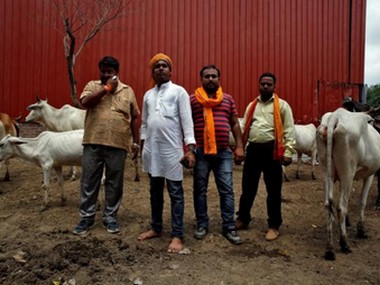As a child, I have seen the “Mot”, an oxen-pulled leather bucket used for irrigating the fields when pumping-sets was rare and the tube well was still unheard of.
The Mot was made either of cow or bullock hide. It was continuously dipped in the well and we drank from it directly, yet we remained Hindus. If a bull calf were born, there would be a degree of celebration equivalent to a son being born in the family. The average Indian farmer, at that point in time had multiple uses of his bovine wealth, from tilling the land, to “Dauri” (separation of grain post harvest from hay), irrigation, along with the advantages of cow’s milk.
The unproductive cattle would be sold with no questions asked. If a cow or ox died, the Dalits, who are also Hindu, would take away the carcass to the fields, everyone knew they would skin the hide and sell it, the vultures would finish the flesh off and then, the bones sold. It was accepted as the natural order of things. The Indian farmer was a practical species, even then.
With evolving technology and the onset of green revolution, the beasts of burden gave space to pumping sets, tube wells, tractors, thrashers, and later, harvesters. The indispensable ox, from being a beast of burden became a beast that was a burden. Artificial insemination rendered the bull redundant. In the race to increase yields, the indigenous cow, the original Gau Maata became a rarity and gave way to other breeds like the Holstein Friesian, Jersey, Swiss Brown etc. As per 2013 – 14 census figures, the indigenous cow accounts for just a fifth of bovine milk production in the country. The Indian farmer now prefers the buffalo for the higher fat (approx. 7 %) and solids – not fat (approx. 9%) content, as compared to a cow’s 3.5 and 8.5 % in their milk respectively.
A beef ban regime reinforced by a vociferous Gau Rakshak brigade has the potential to derail the entire dairy farming economy and may well drive the venerable Gau Maata into further oblivion. It is simply not practical for a farmer or a commercial dairy farmer to maintain a cow after a maximum of six calvings as milk production plummets thereafter. Forcing a farmer to send his unproductive cattle to a gaushala denies him of a revenue stream. The costs of maintaining these unproductive cattle should also be taken into consideration as it would be astronomical, money that can be better used elsewhere. Also government-run gaushalas have the potential of turning into full blown ” Chara Ghotalas”. The ashram of a Swami, Mahant or Yogi looking after the wellbeing of a few hundred cows isn’t the same as a government running a taxpayer-funded Gaushala as devotion crowdfunds the expenses of an ashram.
Our forefathers referred to their bovine herds as “Pashu Dhan” because they had mercantile value, apart from providing nutrition and being beasts of burden, they could also be encashed. The modes of encashment have changed but their mercantile value remains, it would be gross injustice to superimpose a definition of bygone times on our farmers. With a number of contiguous states drafting tough anti-slaughter laws, strictly enforced by belligerent modern day gau-rakshaks who seem to have absolutely little or no connect to the economics of cattle rearing, the market for unproductive cattle has gone into a tailspin and the only true Gau Rakshak, the farmer is getting a raw deal. A number of interdependent industries from transporters, to tanneries, to slaughter houses, apart from the traders and labor involved at every stage of this supply chain would be affected.
A decline in the number of livestock from 304.4 million in 2007 census to 299.6 million in 2012 census when compared to the steady rise in milk production, 55.6 million tons 1991 – 92 to 155.5 million tons in 2015 – 16, seems to suggest that commercial culling complements commercial dairy farming by absorbing redundant and unproductive livestock. Modern-day Gau Raksha has the potential to derail the white revolution, by bringing a number of interdependent industries to heel, and pushing up the price of legally available meat. Thereby, denying a large part of the population a source of economically available protein.
Hinduism isn’t a monolithic religion, hindus outside what is popularly known as the cow belt aren’t necessarily averse to beef. In fact in many states beef is the staple norm, and it is worth noting that the cattle meant for slaughter enters the supply chain only after a farmer, primarily a Hindu, sells it.


















